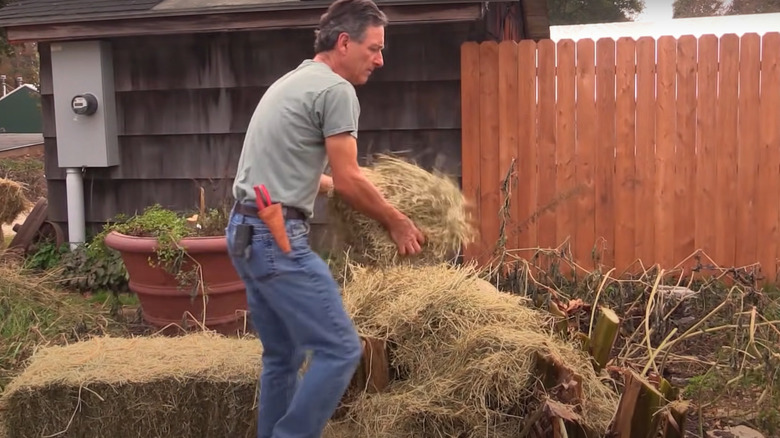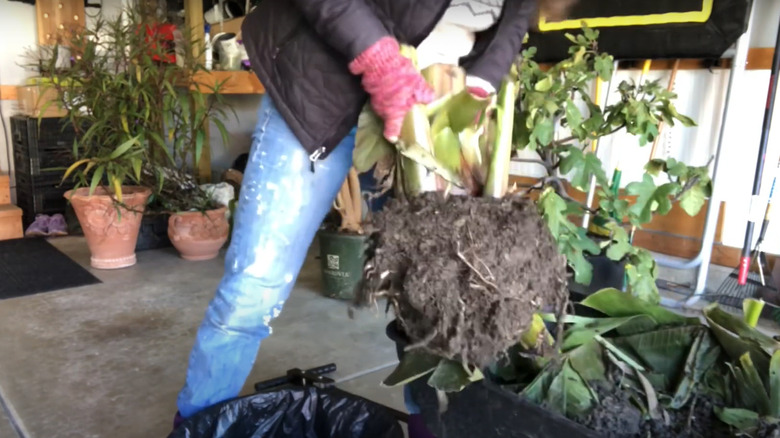Garden Trees, Shrubs & Vines
Sakshi Khaitan
Bananas’ colossal glossy, elliptical leaves and their ability to keep aphids out of the garden make them an irresistible planting choice in patios and gardens. But their tropical nature plays spoilsport, derailing all possibility for these large-leafed plants to withstand freezing temperatures. While cold, hardy cultivars such as Japanese fiber banana and black Thai are widely grown for their ability to survive in sub-zero temperatures, they too become bare and turn dormant in extreme cold, necessitating some winter TLC. While the easiest way to frost-proof bananas is to bring them inside when it hits 50 degrees Fahrenheit and give them a sunny view, it only works for container plants.
To guard garden-planted bananas, prune their stalks, mulch the soil, and cage them with chicken wire. But when this proves insufficient — like in colder climates — remove them from the soil and store them indoors. A revised NSW research study found that the exposed banana tissues darken and wither out when exposed to frost. Usually, they begin losing leaves when temperatures dip below 32 degrees Fahrenheit, followed by fruits, branches, and roots. However, the plants don’t die completely and regrow in the spring, with the downside being that you lose all the previous year’s growth.
Frost protection for ground-planted bananas

LogeesPlants/YouTube
To protect your banana tree from the worst of winter, after the first frost, deadhead its foliage, especially the discolored, rotting brown-black leaves. Next, using a pair of sharp pruners, cut down the stem at a 45-degree tilt (facing away from the plant’s center) to 12 inches from the ground. This restricts the water movement, preventing root rot mid-winter. After pruning, cover the plant in horticultural fleece or burlap and secure it with twine. Double wrap the tree in hessian if you live in colder climates.
Once wrapped, spread 1-foot-thick mulch containing wood chips, dead leaves, or grass clippings to the plant’s base to insulate it. Next, cover the mulch with a plastic sheet to prevent water retention and secure it with rocks or more mulch, but avoid adding peat moss as it readily absorbs water, which can harm the roots. If you experience a dramatic temperature drop, hammer a wire frame, chicken wire, or tomato cage around the broad-leafed tropical at a 6-inch distance from the pseudostem (trunk) and fill it with dry straw. Alternatively, cover the banana plant in a frost blanket or an upturned barrel and layer it with another plastic sheet. When the frost season ends, remove the packing and apply a balanced, 10-10-10 fertilizer to your exotic flora.
Digging out banana plants in advance of extreme winter

Here She Grows/YouTube
While layering up the banana tree usually suffices, it may be insufficient in severe winters, especially for smaller plants and the less hardy cultivars like dwarf cavendish, lady finger, and ice cream. So, lend them winter protection by digging out the herbaceous plants from the soil and bringing them inside. To do so, prune the plant down to 6 inches during late fall or at least before the first frost, and lift it up, inclusive of the 6- to 8-inch area surrounding the stalk, to get all the roots out.
Pot the uprooted perennials in damp sand after drying them out for a few days by placing them on their sides atop a newspaper. Next, place the container in a shaded, frost-free area or a crawl space where temperatures fluctuate between 45 and 50 degrees Fahrenheit. The potted banana plant will remain dormant through the winter and possibly lose its crown come spring, requiring a trim. Separate any baby plants (suckers) from the pot and replant the fast-growing tree on the lawn when temperatures rise to about 60 degrees Fahrenheit.



